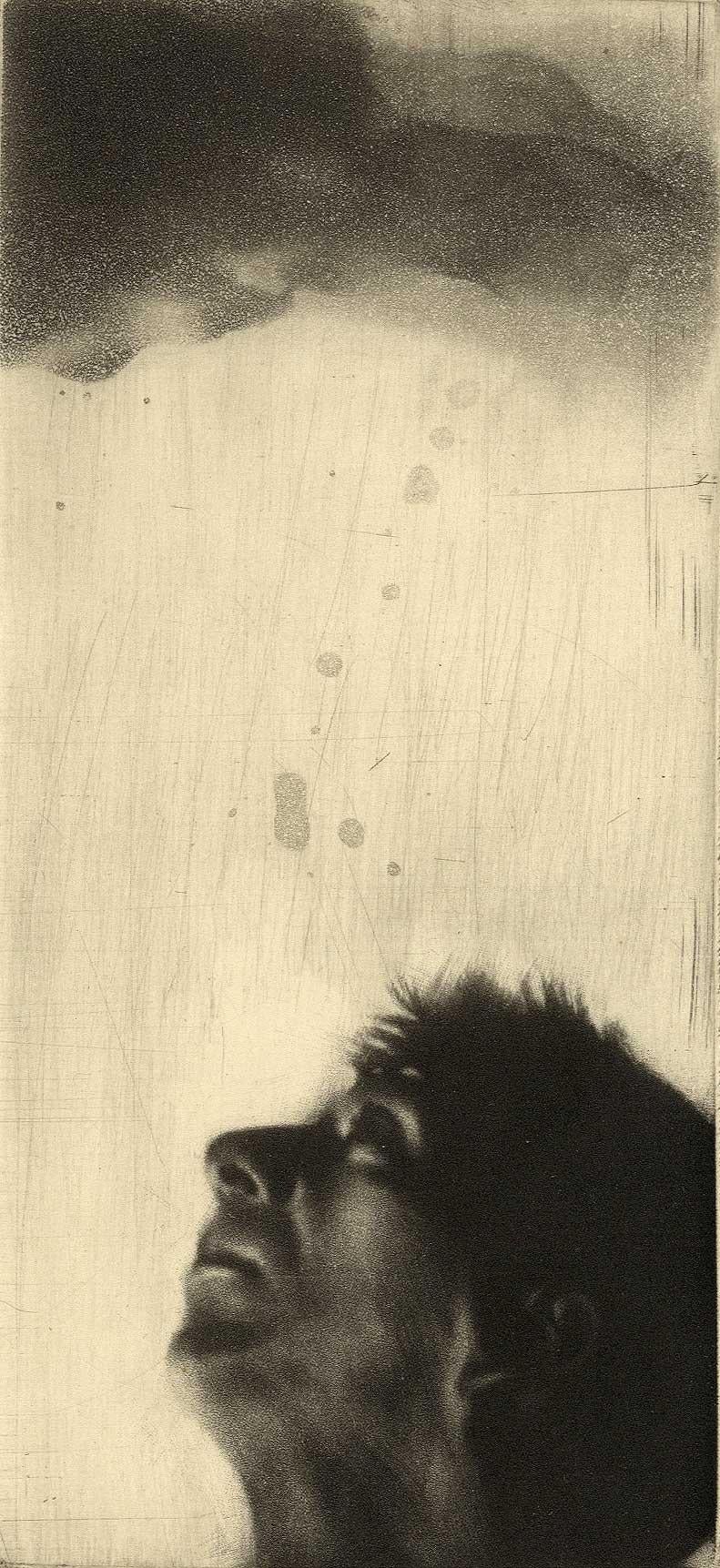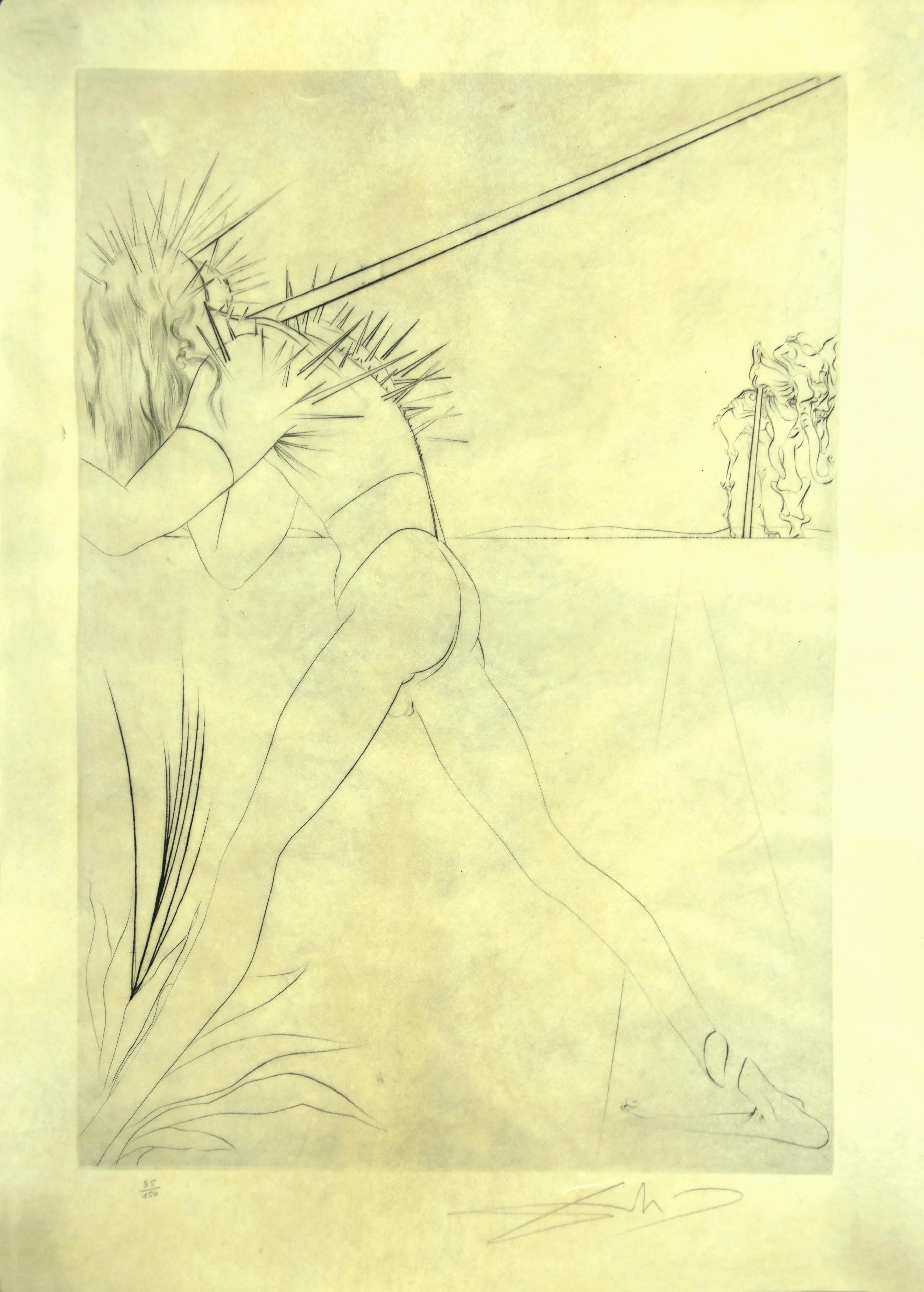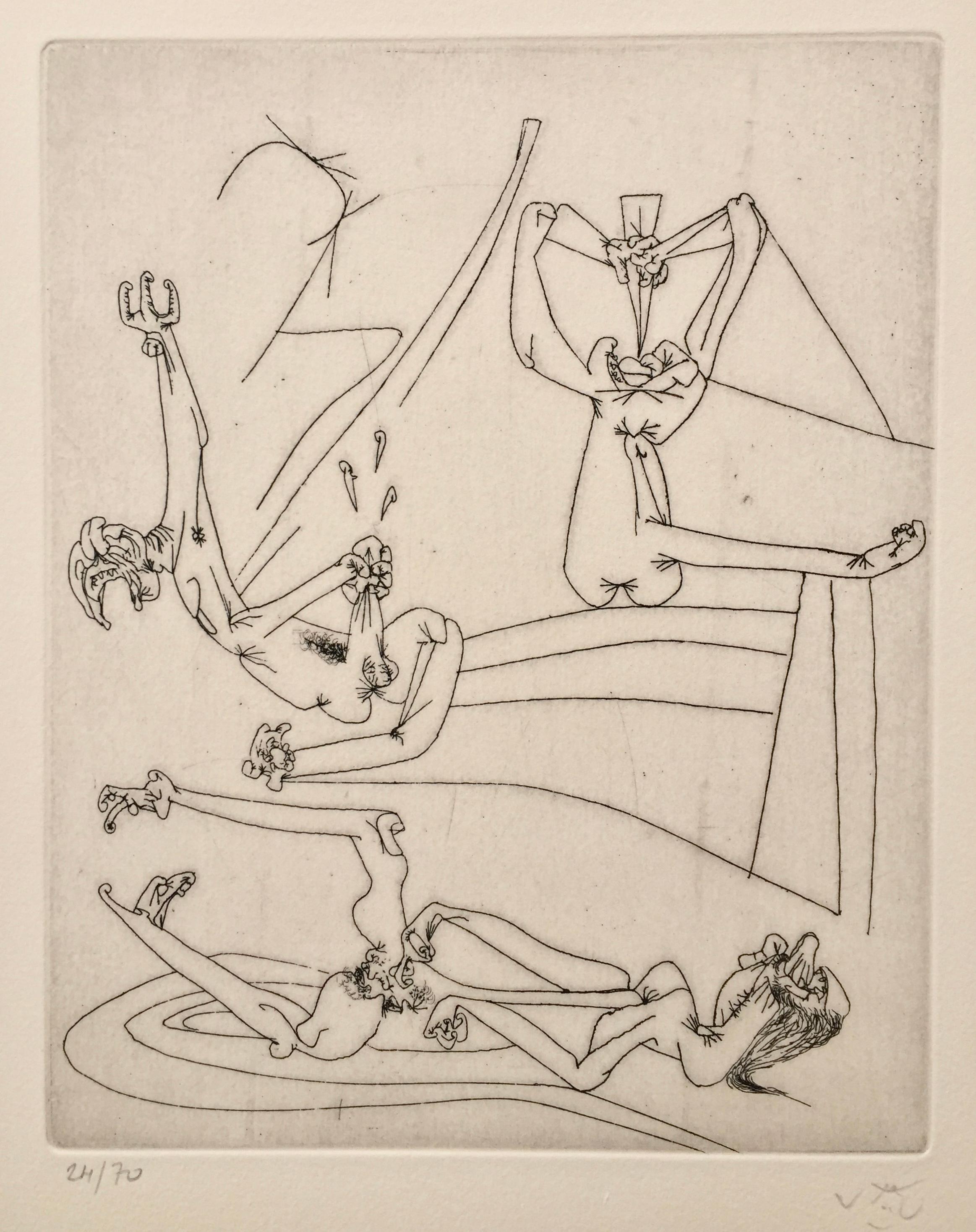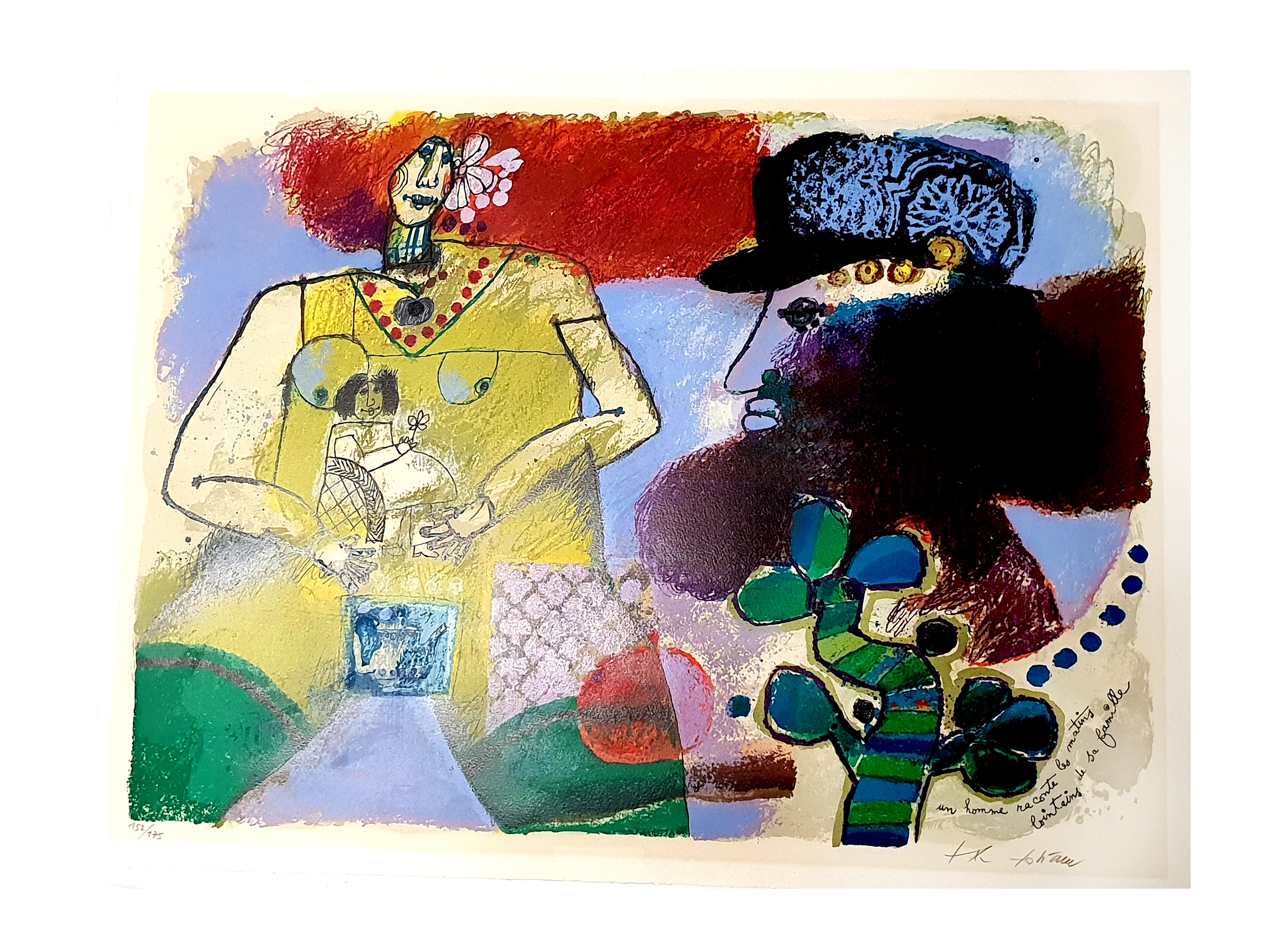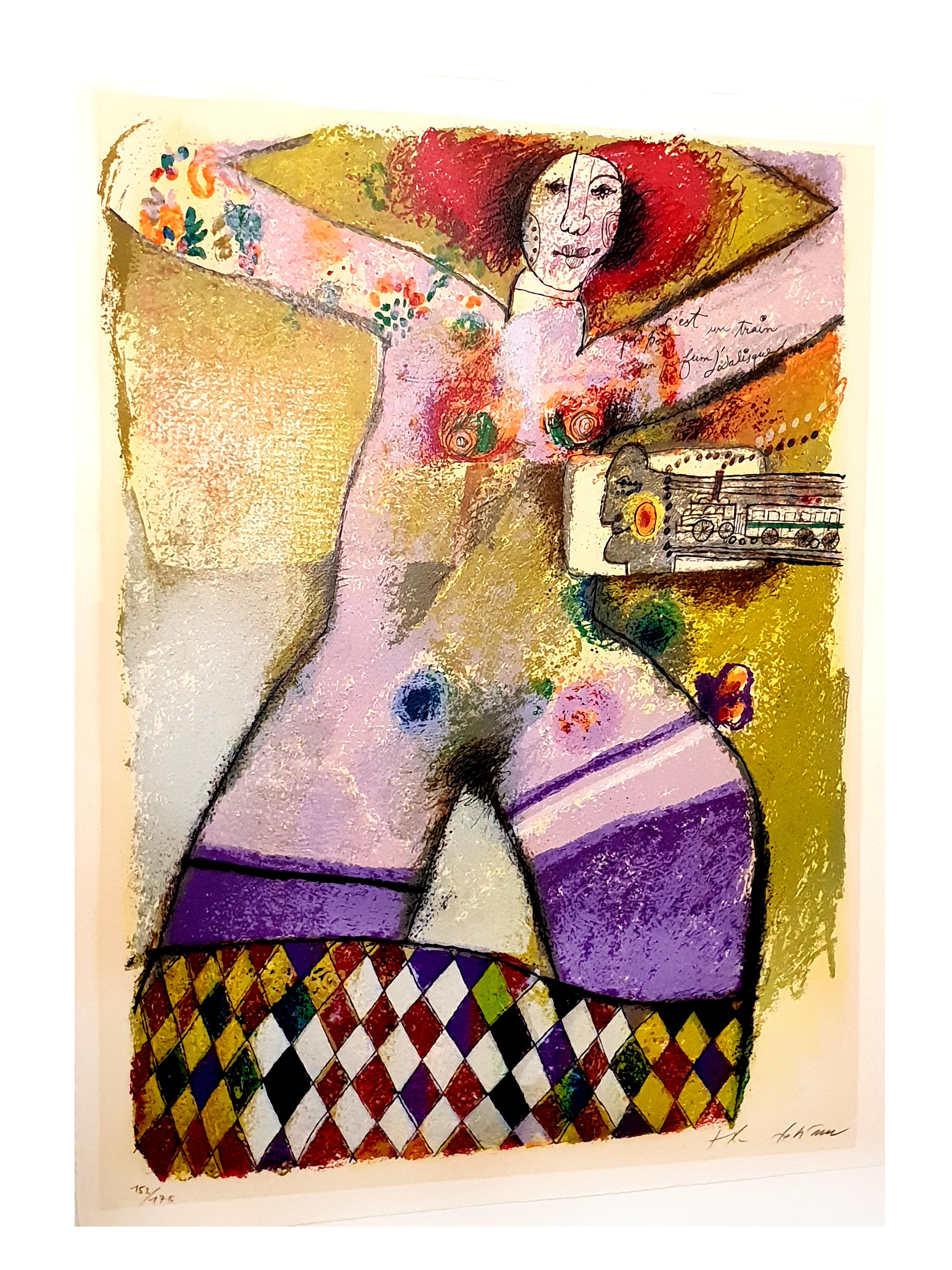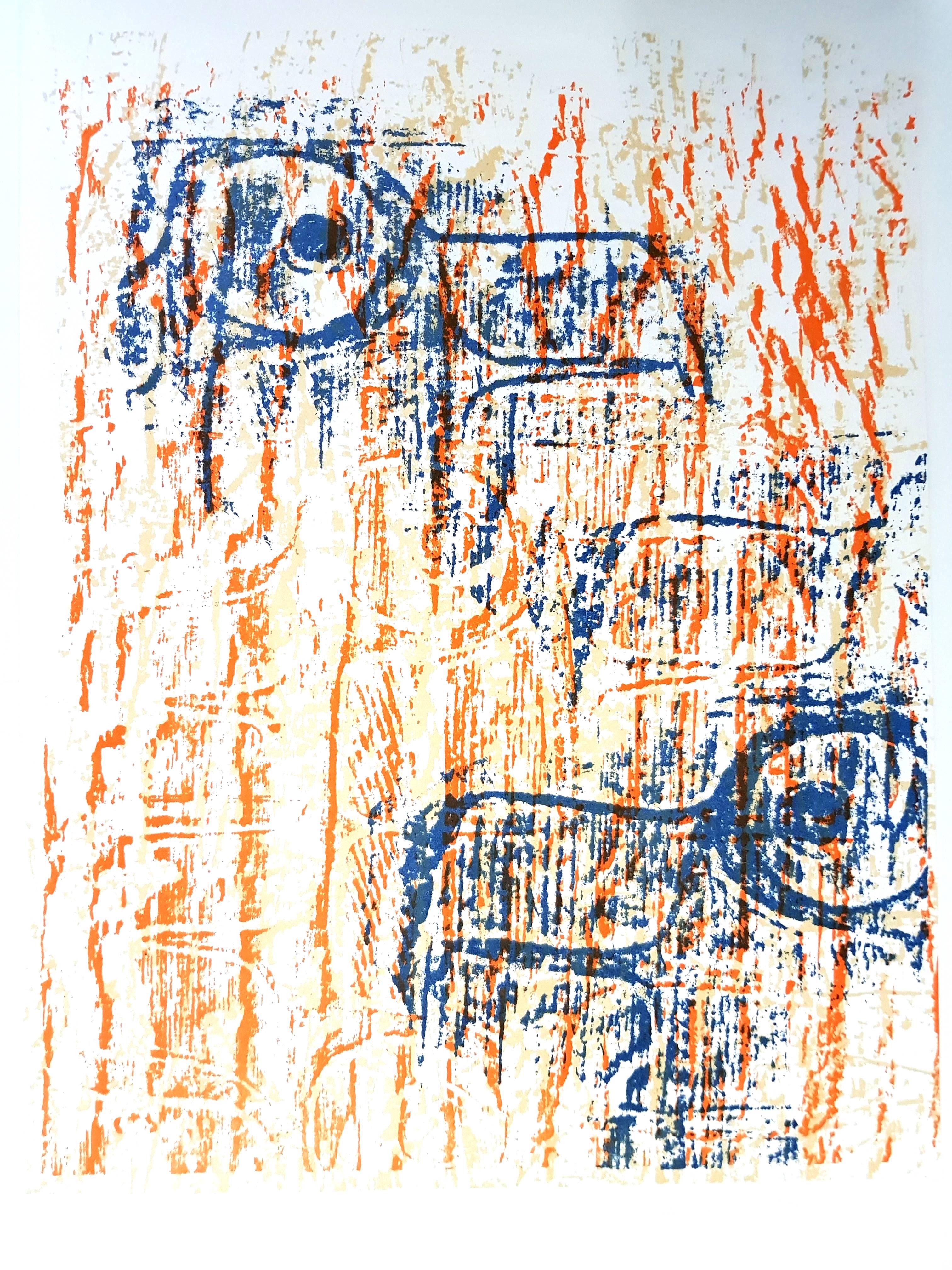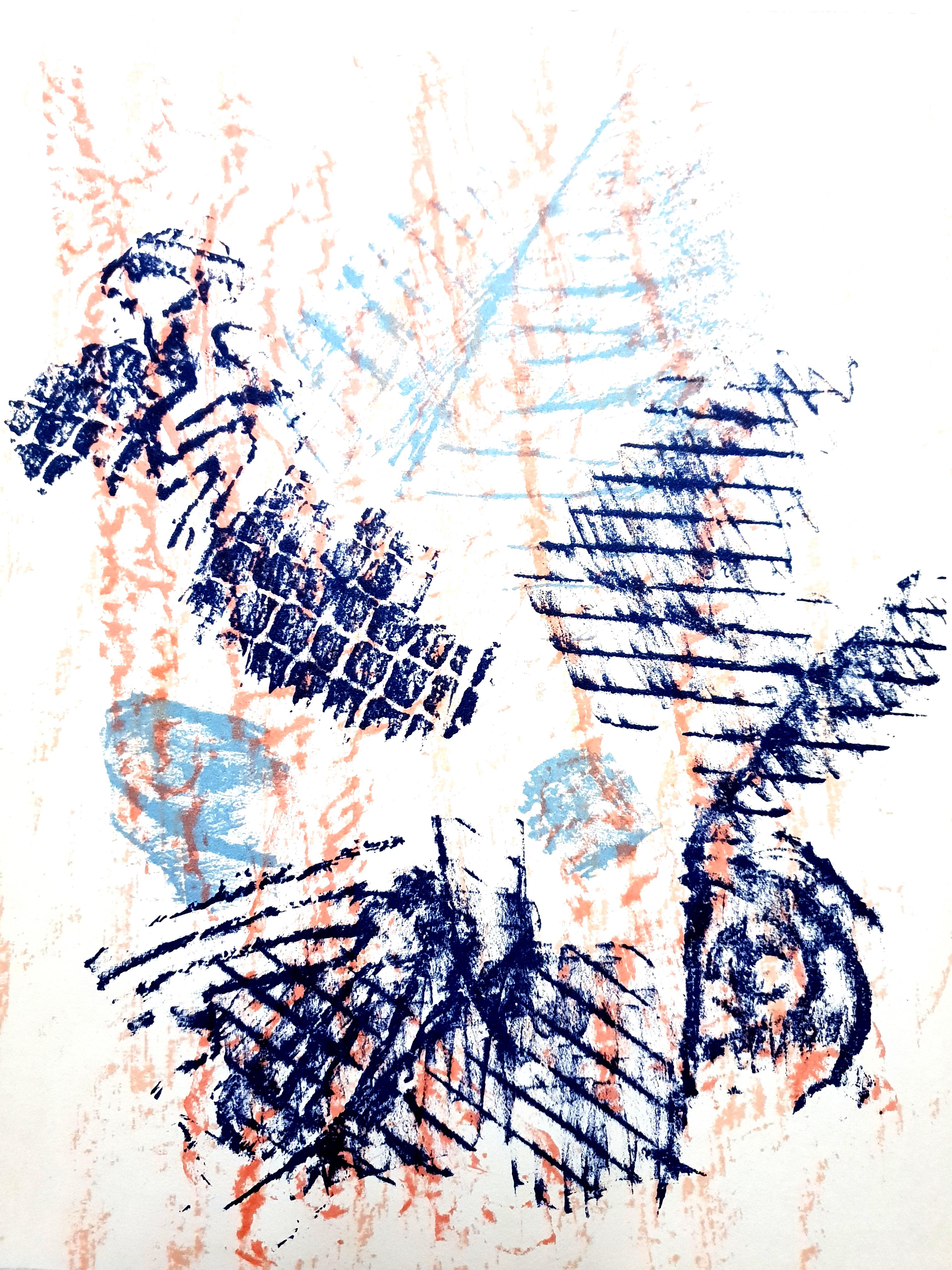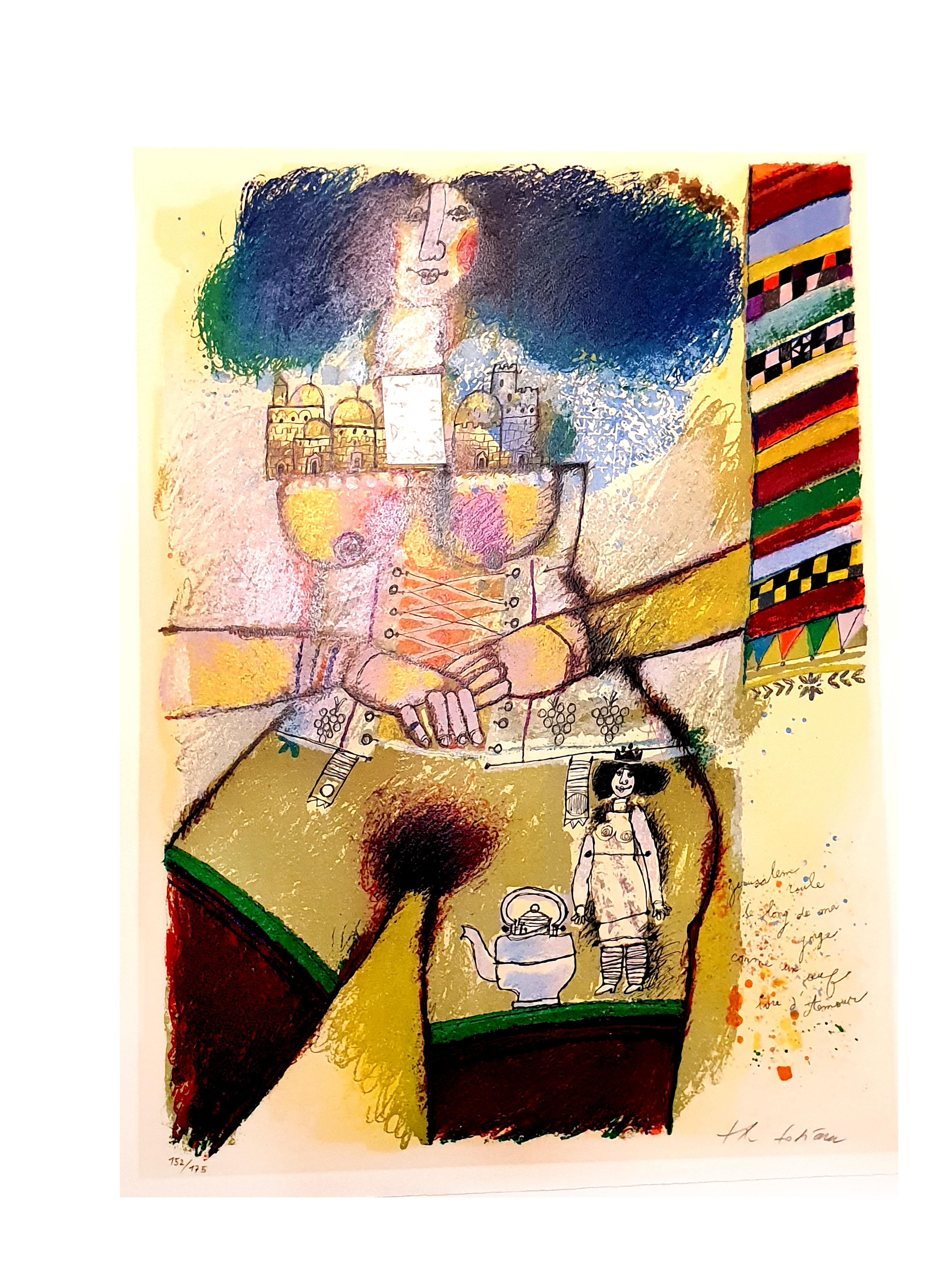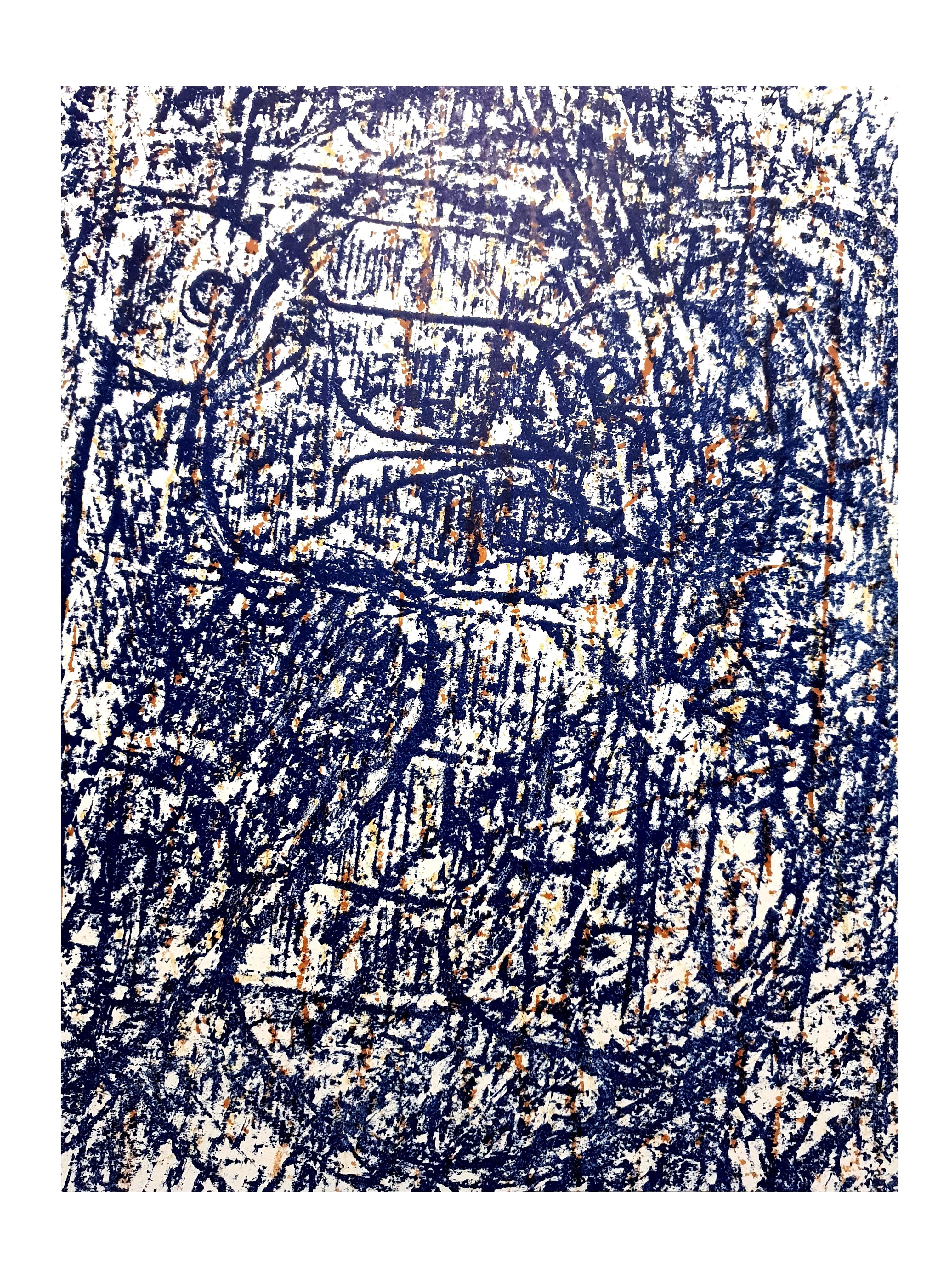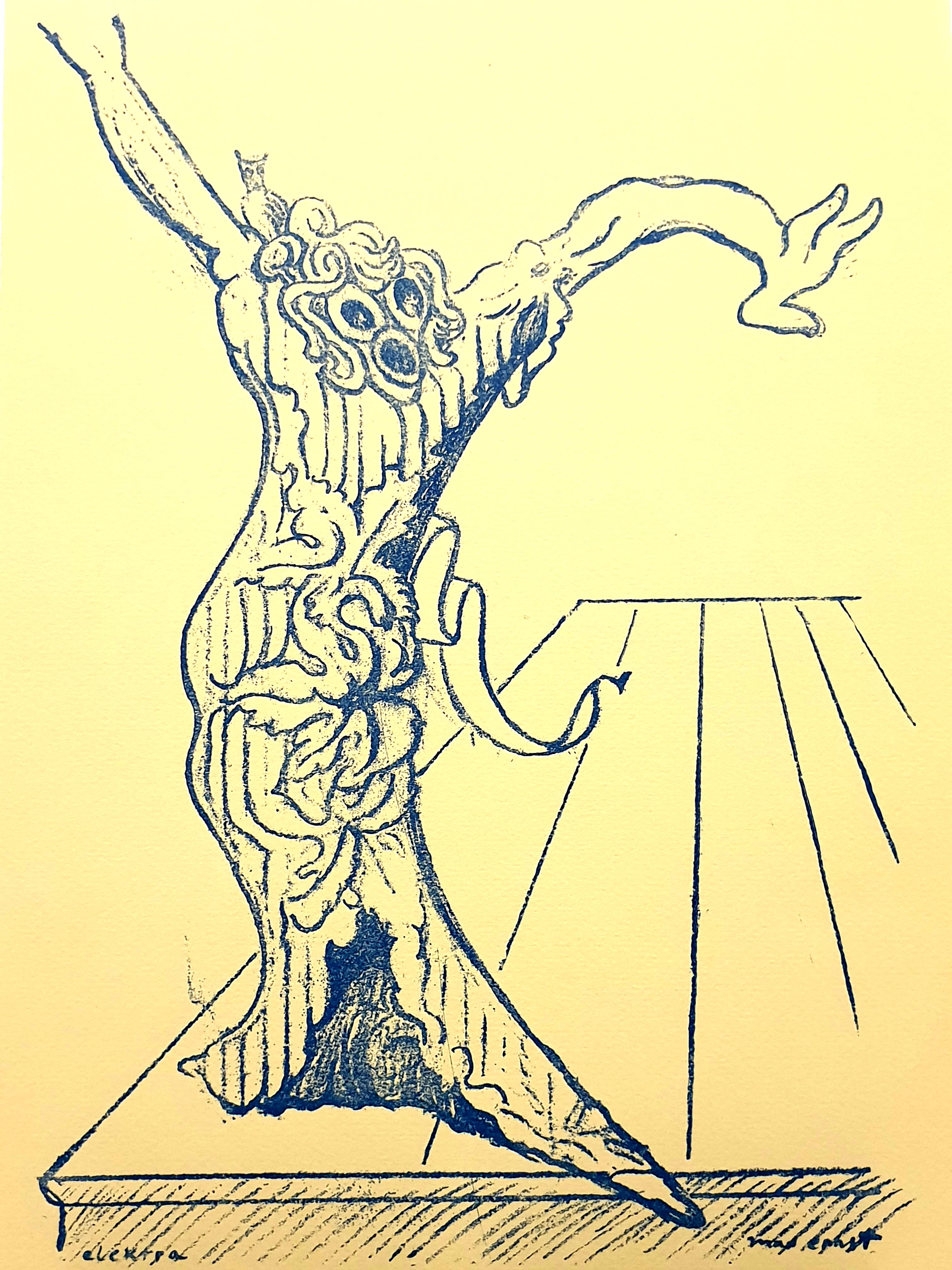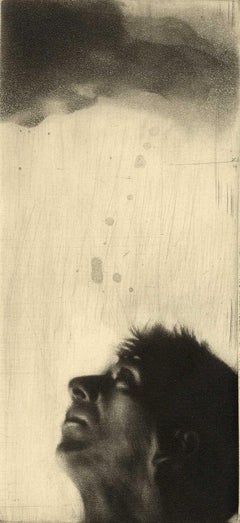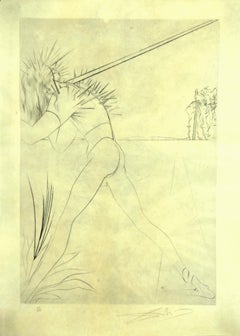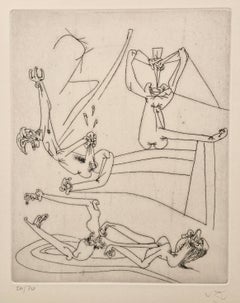Rising Sun - ceramic tile - 1954
View Similar Items
Want more images or videos?
Request additional images or videos from the seller
1 of 5
(after) Salvador DaliRising Sun - ceramic tile - 19541954
1954
About the Item
- Creator:(after) Salvador Dali (1904 - 1989, Spanish)
- Creation Year:1954
- Dimensions:Height: 7.88 in (20 cm)Width: 7.88 in (20 cm)
- Medium:
- Movement & Style:
- Period:
- Condition:
- Gallery Location:Paris, FR
- Reference Number:1stDibs: LU46431947773
(after) Salvador Dali
Salvador Dali (1904 – 1989) was a Spanish surrealist artist renowned for his technical skill, precise draftsmanship and the striking and bizarre images in his work. Born in Figueres, Catalonia, Dali received his formal education in fine arts in Madrid. Influenced by Impressionism and the Renaissance masters from a young age, he became increasingly attracted to Cubism and avant-garde movements. He moved closer to Surrealism in the late 1920s and joined the Surrealist group in 1929, soon becoming one of its leading exponents. His best-known work, The Persistence of Memory, was completed in August 1931, and is one of the most famous Surrealist paintings. Dali lived in France throughout the Spanish Civil War (1936 to 1939) before leaving for the United States in 1940 where he achieved commercial success. He returned to Spain in 1948 where he developed his "nuclear mysticism" style, based on his interest in classicism, mysticism and recent scientific developments. Dali's artistic repertoire included painting, graphic arts, film, sculpture, design and photography, at times in collaboration with other artists. He also wrote fiction, poetry, autobiography, essays and criticism. Major themes in his work include dreams, the subconscious, sexuality, religion, science and his closest personal relationships. Some trends in Dali's work that would continue throughout his life were already evident in the 1920s. Dali was influenced by many styles of art, ranging from the most academically classic, to the most cutting-edge avant-garde. His classical influences included Raphael, Bronzino, Francisco de Zurbaran, Vermeer and Velazquez. Exhibitions of his works attracted much attention and a mixture of praise and puzzled debate from critic
About the Seller
4.9
Platinum Seller
Premium sellers with a 4.7+ rating and 24-hour response times
Established in 2010
1stDibs seller since 2016
3,625 sales on 1stDibs
Typical response time: 1 hour
Authenticity Guarantee
In the unlikely event there’s an issue with an item’s authenticity, contact us within 1 year for a full refund. DetailsMoney-Back Guarantee
If your item is not as described, is damaged in transit, or does not arrive, contact us within 7 days for a full refund. Details24-Hour Cancellation
You have a 24-hour grace period in which to reconsider your purchase, with no questions asked.Vetted Professional Sellers
Our world-class sellers must adhere to strict standards for service and quality, maintaining the integrity of our listings.Price-Match Guarantee
If you find that a seller listed the same item for a lower price elsewhere, we’ll match it.Trusted Global Delivery
Our best-in-class carrier network provides specialized shipping options worldwide, including custom delivery.More From This Seller
View AllPurgatory 11 - The Haughty - woodcut - 1963 (Field #p. 189)
By Salvador Dalí
Located in Paris, IDF
Salvador Dali (1904-1989)
Purgatory 11 - The Haughty
From "The Divine Comedy"
Original woodcut
Signature printed in the plate
Printed on BFK Rives vellum 32,8 x 26,4 cm (c. 13 x 10 ...
Category
1960s Surrealist Figurative Prints
Materials
Woodcut
Purgatory 6 - The Dead by Violence - Color woodcut - (Field # p. 189)
By Salvador Dalí
Located in Paris, IDF
Salvador Dali (1904-1989)
Purgatory 6 - The Dead by Violence
Original woodcut
Signature printed in the plate
1960/63
Printed on BFK Rives vellum
Size 32,8 x 26,4 cm (c. 13 x 10")
R...
Category
1960s Surrealist Figurative Prints
Materials
Woodcut
Women Temple - Original handsigned etching - Numbered / 115
By Hiroshi Asada
Located in Paris, IDF
Hiroshi ASADA
Women temple
Original etching
Handsigned in pencil
Numbered / 115
On Arches vellum 50 x 65 cm (c. 20 x 26 inch)
Excellent condition
Category
Late 20th Century Surrealist Figurative Prints
Materials
Etching
$209 Sale Price
28% Off
Man and Sea - Vintage exhibition poster - 1972
By (after) Salvador Dali
Located in Paris, IDF
Salvador Dali (after)
Man and Sea
Exhibition poster printed in offset, with some color in lithograph and metallic ink
Signature printed in the plate
119 x 84 cm (c. 48 x 34 inch)
Ed...
Category
1970s Surrealist Figurative Prints
Materials
Lithograph, Offset
Indiscrete Jewels (Les Bijoux Indiscrets) - Original lithograph [Catalog #3]
By René Magritte
Located in Paris, IDF
René MAGRITTE
Les bijoux indiscrets (Indiscrete jewels), 1975
Original lithograph (Printed in Mourlot Workshop)
Printed signature in the plate
Unnumbered as usual (limited edition o...
Category
1970s Surrealist Figurative Prints
Materials
Lithograph
Jean COCTEAU & Raymond MORETTI: Birth of Venus - Original Handsigned Lithograph
By Jean Cocteau
Located in Paris, IDF
Jean Cocteau and Raymond Moretti
Birth of Venus
Original lithograph
Printed signature in the plate, handsigned by Raymond Moretti
Numbered 1/29 - Very look for proof bearing n°1
On ...
Category
1970s Surrealist Figurative Prints
Materials
Lithograph
You May Also Like
Double Faces, Variant #1
By Michael Bowen
Located in San Francisco, CA
This artwork titled "Double Faces" c.1975 is an original color etching with aquatint on wove paper by American surrealist artist Michael Bowen, 1937-2009. It is hand signed with initials in pencil by the artist. The plate mark (image) size is 21.75 x 17.5 inches, sheet size is 29.25 x 20.75 inches. It is in excellent condition, has never been framed.
About the subject:
Nowhere is the intertwining of metaphysical, biographic and social narratives more evident than in the Café Life series painted in the 1980’s. Though the “series” was done in the 80’s, the pieces really revive the spirit of the Beat café scene, which began in the mid-1950’s and which was so instrumental to the particular spiritual and social vibe of the counter culture. And his Café Life observations continue over his artist life with scenes, such as the ones here, from Los Angles, Bolinas, Mexico and Italy.
About the artist:
Michael Bowen (December 8, 1937 – March 7, 2009) was an American fine artist known as one of the co-founders of the late 20th and 21st century Visionary art movements. His works include paintings on canvas and paper, 92 intaglio etchings based on Jungian psychology, assemblage, bronze sculpture, collage, and handmade art books. An icon of the American Beat Generation and the 1960s counterculture, Bowen is also known for his role in inspiring and organizing the first Human Be-In in San Francisco. Chronicled in books and periodicals reflecting on the turbulent 1960s, Bowen's historical impact on both the literary and visual art worlds is well documented. He remains influential among avant-garde art circles around the world. He started his art career at age 17, when he joined the American installation artist Ed Kienholz in his Los Angeles studio. There he met and joined with other influential Beat Generation artists including Wallace Berman, John Altoon, and Dennis Hopper. Bowen participated in the construction of the Ferus Gallery and Now Gallery created by Ed Kienholz and curated by Walter Hopps. Bowen attended the Chouinard Art Institute for several years during his formative artistic experiences in Los Angeles. In the late 50s and early 60s, Bowen continued his spiritual training and research. He investigated and practiced a variety of occult topics, Eastern philosophies, and mysticism, and his artwork reflected these themes. Bowen is often referred to as a mystic artist. As a lifelong student of the Bhagavad-Gita, Bowen's entire career has emulated the spiritual warrior archetype of Arjuna, fighting for the Bill of Rights of the United States Constitution. Michael Bowen moved to San Francisco in the late 1950s, and along with fellow artist comrades Arthur Monroe...
Category
Late 20th Century Surrealist Figurative Prints
Materials
Etching, Aquatint
Looking Up (left profile of a man looking toward the heavens)
By Maurice Pasternak
Located in New Orleans, LA
Maurice Pasternak has created a surreal landscape that includes several spirit-like creatures seeming to wander in an unknown landscape He moves images around on the paper to create ...
Category
Late 20th Century Surrealist Landscape Prints
Materials
Mezzotint
$140 Sale Price
20% Off
Il y a Des Soldats - Etching attr. to S. Dalì - 1973
By Salvador Dalí
Located in Roma, IT
Il ya a des Soldats (There are Some Soldiers) is an original etching and drypoint realized by Salvador Dalì in 1973. It belongs to the series "Poi, Je t'Attends à Babylone", a suite ...
Category
1970s Surrealist Figurative Prints
Materials
Etching
MATTA - 10 EROTIC ETCHINGS - New School Portfolio
By Roberto Matta
Located in Santa Monica, CA
ROBERTO MATTA (Chilean 1911- 2002)
NEW SCHOOL PORTFOLIO (1943-5) (Sabatier 1-7, 4 prints not recorded by Sabatier)
Portfolio with complete set of 10 etch...
Category
1940s Surrealist Figurative Prints
Materials
Etching
Théo Tobiasse - Jerusalem Inside - Original Lithograph with Collage
By Théo Tobiasse
Located in Collonge Bellerive, Geneve, CH
Théo Tobiasse
Title: Jerusalem roule le long de ma gorge
Signed and Numbered
Dimensions: 57 x 76 cm
Information : Edition of 175
Condition : Excellent
Category
1980s Surrealist Figurative Prints
Materials
Lithograph
$1,301 Sale Price
20% Off
Max Ernst - Birds - Original Lithograph
By Max Ernst
Located in Collonge Bellerive, Geneve, CH
Max Ernst - Birds - Original Lithograph
Birds, 1964 (BNF, 63)
Dimensions: 32 x 24 cm
Revue Art de France
ax Ernst was born in Bruhl, a place near Cologne, in Germany. He was raised in a strict Catholic family, and both of his parents were disciplinarians who were dedicated to training their children into God-fearing and talented individuals. Although his father was deaf, Ernst learned so much from him, particularly when it comes to painting. In fact, much of his early years were lived under the inspiration of his father who was also a teacher. He was the one who introduced painting to Ernst at an early age.
In 1914, Ernst attended the University of Bonn where he studied philosophy. However, he eventually dropped out of school because he was more interested in the arts. He claimed that his primary sources of interest included anything that had something to do with painting. Moreover, he became fascinated with psychology, among other subjects in school.
Primarily, Ernst's love for painting was the main reason why he became deeply interested with this craft and decided to pursue it later on in his life. During his early years, he became familiar with the works of some of the greatest artists of all time including Claude Monet, Paul Cezanne and Vincent van Gogh. He was also drawn to themes such as fantasy and dream imagery, which were among the common subjects of the works of Giorgio de Chirico.
During World War I, Ernst was forced to join the German Army, and he became a part of the artillery division that exposed him greatly to the drama of warfare. A soldier in the War, Ernst emerged deeply traumatized and highly critical of western culture. These charged sentiments directly fed into his vision of the modern world as irrational, an idea that became the basis of his artwork. Ernst's artistic vision, along with his humor and verve come through strongly in his Dada and Surrealists works; Ernst was a pioneer of both movements.
It was Ernst's memories of the war and his childhood that helps him create absurd, yet interesting scenes in his artworks. Soon, he took his passion for the arts seriously when he returned to Germany after the war. With Jean Arp, a poet and artist, Ernst formed a group for artists in Cologne. He also developed a close relationship with fellow artists in Paris who propagated Avant-Garde artworks.
In 1919, Ernst started creating some of his first collages, where he made use of various materials including illustrated catalogs and some manuals that produced a somewhat futuristic image. His unique masterpieces allowed Ernst to create his very own world of dreams and fantasy, which eventually helped heal his personal issues and trauma. In addition to painting and creating collages, Ernst also edited some journals. He also made a few sculptures that were rather queer in appearance.
In 1920s, influenced by the writings of psychologist Sigmund Freud, the literary, intellectual, and artistic movement called Surrealism sought a revolution against the constraints of the rational mind; and by extension, they saw the rules of a society as oppressive. Surrealism also embraces a Marxist ideology that demands an orthodox approach to history as a product of the material interaction of collective interests, and many renown Surrealism artists later on became 20th century Counterculture symbols such as Marxist Che Guevara. In 1922 Ernst moved to Paris, where the surrealists were gathering around Andre Breton. In 1923 Ernst finished Men Shall Know Nothing of This, known as the first Surrealist painting. Ernst was one of the first artists who apply The Interpretation of Dreams by Freud to investigate his deep psyche in order to explore the source of his own creativity. While turning inwards unto himself, Ernst was also tapping into the universal unconscious with its common dream imagery.
Despite his strange styles, Ernst gained quite a reputation that earned him some followers throughout his life. He even helped shape the trend of American art during the mid-century, thanks to his brilliant and extraordinary ideas that were unlike those of other artists during his time. Ernst also became friends with Peggy Guggenheim, which inspired him to develop close ties with the abstract expressionists.
When Ernst lived in Sedona, he became deeply fascinated with the Southwest Native American navajo art. In fact, the technique used in this artwork inspired him and paved the way for him to create paintings that depicted this style. Thus, Ernst became a main figure of this art technique, including the rituals and spiritual traditions included in this form of art. Pollock, aside from the other younger generations of abstract expressionists, was also inspired by sand painting of the Southwest...
Category
1960s Surrealist Animal Prints
Materials
Lithograph
$976 Sale Price
30% Off
